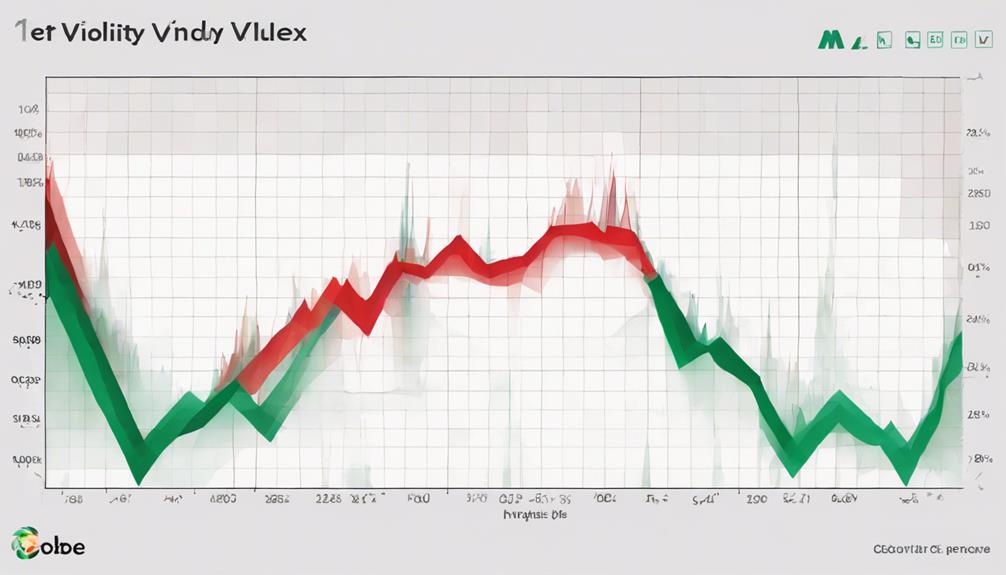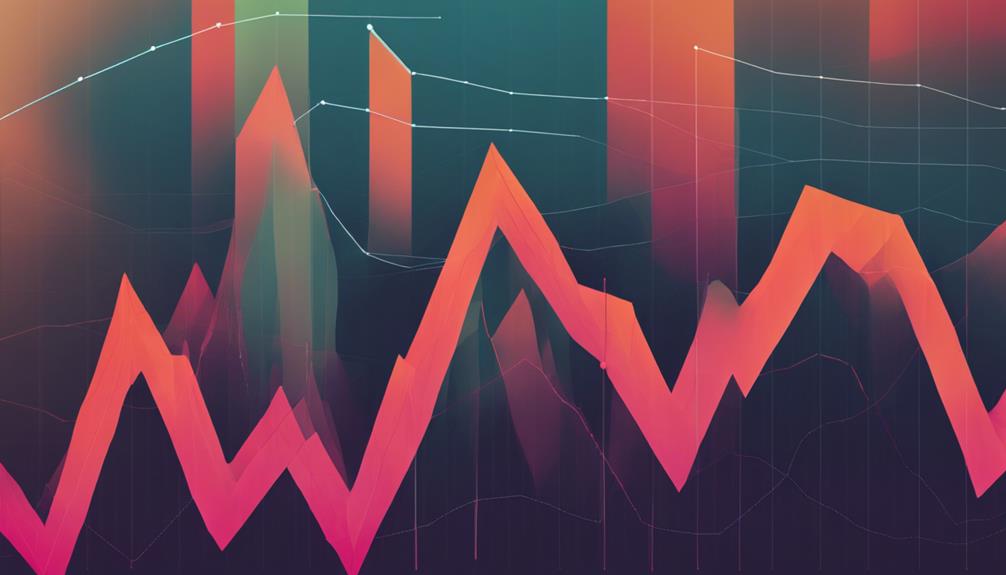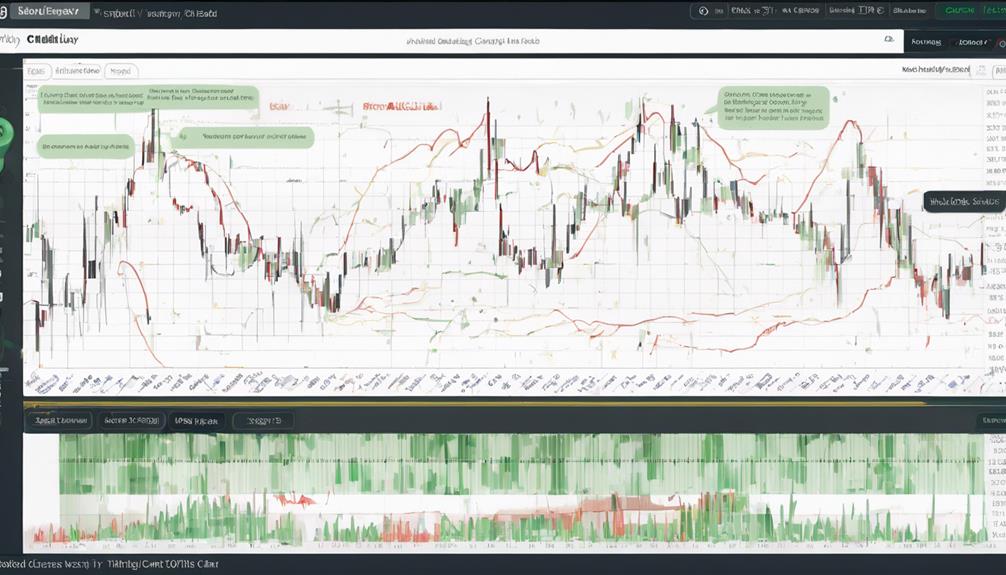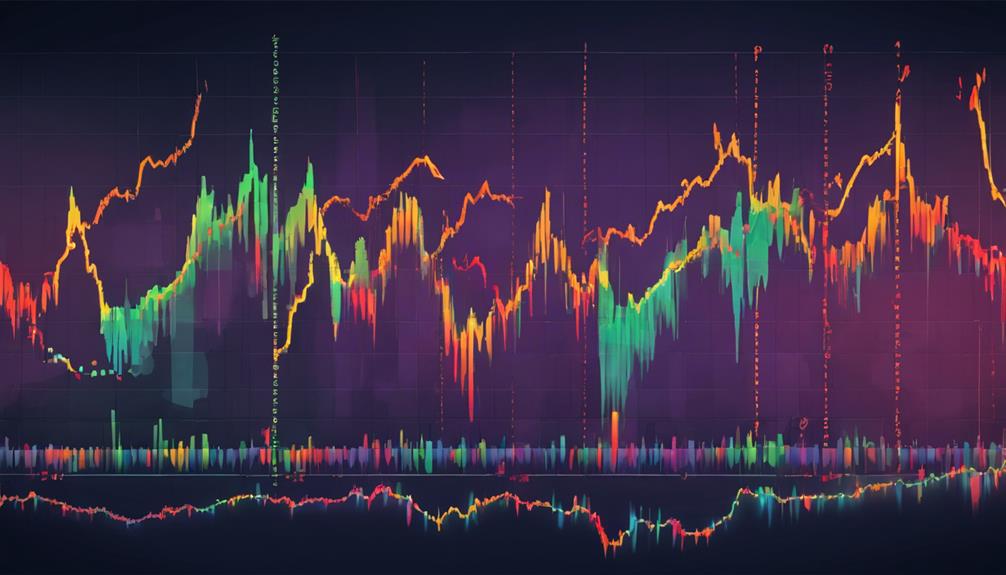In the fast-paced world of trading, understanding key volatility indicators is paramount for making informed decisions in the financial markets. These indicators serve as valuable tools to gauge market conditions and anticipate potential price movements.
By utilizing indicators such as Bollinger Bands, Average True Range (ATR), and the Volatility Index (VIX), traders can gain insights into market sentiment, identify trends, and strategically manage risk. However, mastering the interpretation of these indicators is crucial for successful trading strategies.
The ability to navigate and leverage these key indicators can significantly impact trading outcomes and contribute to a trader's overall success.
Overview of Volatility Indicators
Within the realm of trading analysis, understanding volatility indicators plays a crucial role in assessing market dynamics and making informed decisions. Volatility indicators such as Average True Range (ATR), Bollinger Bands, Volatility Index (VIX), Keltner Channel, and Donchian Channels are essential tools for traders.
ATR measures the price movement volatility over a specific period, aiding in setting stop-loss orders based on market fluctuations. Bollinger Bands track price movements relative to a moving average and upper/lower bands, helping to identify potential breakout points.
VIX reflects market sentiment and anticipates volatility levels through S&P 500 options prices, offering insights into potential market movements. Keltner Channel utilizes volatility to determine trends and reversals by analyzing price movements within a specified range.
Donchian Channels track support and resistance levels, aiding traders in identifying key price levels for making trading decisions. These technical indicators provide valuable information on market dynamics and support traders in navigating the complexities of price fluctuations with more informed strategies.
Cboe Volatility Index

The Cboe Volatility Index (VIX) serves as a prominent market volatility metric derived from S&P 500 options prices. Traders closely monitor the VIX as it provides insights into market uncertainty and potential price fluctuations.
Elevated VIX levels, especially above 30, typically suggest increased volatility in the market. Market participants use VIX-linked derivatives and exchange-traded funds (ETFs) to hedge against adverse market movements.
Often referred to as the 'fear index,' the VIX reflects market sentiment and expectations, particularly during turbulent periods. By analyzing S&P 500 options prices, the VIX calculates the expected volatility over the next 30 days.
This real-time indicator helps traders assess and prepare for potential market risks. Understanding the VIX can aid traders in making informed decisions and navigating the dynamic landscape of the financial markets effectively.
Average True Range Indicator

An essential tool for traders seeking to measure price volatility and assess market conditions is the Average True Range (ATR) indicator.
This indicator calculates the average range between high and low prices over a specific period, providing insight into the level of market volatility.
High ATR values suggest increased volatility and the potential for significant price movements, while low values indicate calmer market conditions.
Traders utilize ATR to set stop-loss orders, determine appropriate position sizes, and make more informed trading decisions based on current market conditions.
By adjusting their strategies in response to ATR readings, traders can adapt to varying levels of volatility in different market environments.
ATR serves as a valuable tool for assessing risk and managing positions effectively amidst fluctuating market conditions, helping traders navigate price movements with greater precision and enhancing overall risk management practices.
Bollinger Bands Indicator

A widely used tool in technical analysis to assess market volatility and potential trading opportunities is the Bollinger Bands indicator. Consisting of three lines – the middle band (SMA), upper band (SMA + 2 standard deviations), and lower band (SMA – 2 standard deviations) – Bollinger Bands dynamically adjust to price volatility, with wider bands indicating higher volatility and narrower bands implying lower volatility.
Traders utilize Bollinger Bands to identify potential overbought or oversold conditions in the market. When price movements touch or surpass the outer bands, it may indicate potential trend reversals or breakout opportunities. By combining Bollinger Bands with other technical indicators, traders can enhance their trading signals and decision-making processes.
This integration allows for a more comprehensive analysis of market conditions, increasing the effectiveness of trading strategies and risk management. Bollinger Bands serve as valuable tools for traders seeking to capitalize on price movements and fluctuations in various financial markets.
Bottom Line on Volatility Indicators

In evaluating the effectiveness of volatility indicators, it is crucial to consider their unique characteristics and applications within the realm of trading strategies. When utilizing volatility indicators like Bollinger Bands, Average True Range (ATR), and the Volatility Index (VIX), traders gain valuable insights into price volatility, market sentiment, and potential breakout opportunities.
- Bollinger Bands: These indicators help identify price volatility by tracking price movements around a moving average, aiding traders in understanding the range within which prices typically fluctuate.
- Average True Range (ATR): ATR measures price movement volatility, assisting traders in setting effective stop-loss orders by providing insights into potential price fluctuations.
- Volatility Index (VIX): Reflecting market sentiment, VIX serves as a gauge for potential volatility, allowing traders to anticipate market movements and adjust their strategies accordingly.
What Are the Key Volatility Indicators That Traders Should Pay Attention to?
Traders should keep an eye on key volatility indicators in trading to make informed decisions. The CBOE Volatility Index (VIX) measures stock market volatility based on S&P 500 options. The Average True Range (ATR) shows market volatility by accounting for price gaps. Bollinger Bands indicate price volatility and potential trend reversals.
Frequently Asked Questions
What Is the Best Indicator for Volatility?
The best indicator for volatility is the Bollinger Bands, which track price volatility and potential breakouts by measuring standard deviations from a moving average. Its analytical approach provides traders with valuable insights into market fluctuations.
What Is the Best Measure of Volatility?
In assessing volatility, the Average True Range (ATR) stands out as a premier metric. ATR tracks price range fluctuations over a set duration, aiding traders in gauging market volatility, adjusting positions, and setting stop-loss levels effectively.
What Is the Best Indicator for Iv?
The best indicator for Implied Volatility (IV) is the Volatility Index (VIX) in the market. IV, derived from option prices, reflects market expectations. Higher IV levels indicate increased price fluctuation and risk, aiding traders in adjusting strategies.
Is VIX the Best Indicator of Market Volatility?
When considering market volatility indicators, the VIX, reflecting S&P 500 options prices, stands out for providing real-time insights. While not definitive, VIX values above 30 signal heightened volatility, making it a crucial tool for assessing market sentiments.
Conclusion
In conclusion, the utilization of key volatility indicators in trading can significantly enhance decision-making processes and risk management strategies.
By incorporating these indicators into trading analysis, traders can gain valuable insights into market conditions, anticipate potential price movements, and optimize trade entry and exit points.
Overall, the implementation of these indicators can improve trading performance and facilitate more informed and strategic decision-making in volatile market environments.
